Life is full of firsts and the opening session of Taste of London 2017 was a big first for us. It was the first event that the Jetset Boyz officially attended as press. Okay, so this news might not blow you away, but we felt pretty chuffed. The lovely people at Visit Spain asked us to come along to meet the Basque Country Tourism and see the chefs from Iberica London demonstrating pintxos making.
We’d often seen pintxos (sometimes spelt pinchos) on tapas bar menus. We made pintxos in our tapas making class in Barcelona. It was there that we first learnt that pintxos were a Basque Country speciality. A visit to pintxo specialist Blai 9 in Barcelona showed us just how varied pintxos can be.
Take your pick…
Pintxos originally consisted of a piece of bread with a topping. A toothpick or thin wooden stick held the topping in place with. The name comes from the practice of using the stick. Pintxo is the Basque word for a skewer or a spike. From humble origins as a snack served in the taverns in the Basque Country, pintxos are now a food art form. The Basque culinary society Euskadi Gastronomika holds ‘Miniature‘, an annual Pintxos Congress, every March.
Iberica London provided the food for the Basque Country stand at Taste of London. For the press evening, Basque chef Eneko Ordorika joined Iberica’s Group Head Chef César García for the pintxo making demonstration.
The demo started with black sesame cones filled with red tuna and sardine ceviche, topped with guacamole, lime and strawberry aioli. These yummy little treats looked like miniature ice-creams and tasted as gorgeous as they looked. Following this came a tostada topped with pork belly, which again tasted really great. More pintxos followed, each packed with flavour. (The Bacalao Pil-Pil was particularly tasty).
Pintxos are best enjoyed with a glass of Basque Country txakoli
Throughout the evening the txakoli kept flowing. Another first for us, as we’d never tried it before. Txakoli, (pronounced chack-oh-lee), was traditionally a home-made drink. However, in 1989 some varieties of txakoli achieved Denominación de Origen certification, leading to increased production.
Traditionally, txakoli was fermented in large oak barrels. It’s a dry wine and mostly white, normally served as an aperitif. Usually, it’s drunk within a year of fermentation as its low alcohol content means it doesn’t keep. The traditional way of serving it is to pour from a height. This allows the wine to mix with air, increasing the wine’s slight sparkle and unlocking the flavours.
The Txomin Etxaniz txakoli served to us accompanied the pintxos perfectly. In the Basque language, they have a verb txikitear meaning to go from bar to bar having small glasses of wine, a txikito, in each. Of course, each txikito is accompanied by some pintxos.
There’s more to Basque Country cuisine than pintxos
Pintxos are a very popular snack, but in reality, they are just a taste of the cuisine that is on offer in the Basque Country. One of the things that we learnt was that there are 37 Michelin starred restaurants in the Basque Country, with four of those having 3 Michelin stars. That’s pretty impressive for an area with a population of just over 2 million.
Leaving the Michelin stars to one side, the Basque Country has a rich culinary heritage. The Atlantic coastline has given Basque food a coastal cuisine dominated by fish and seafood. Meanwhile, the fertile Ebro valley led to food rich in fresh and cured meats in the inland areas. Chatting to the people from the Basque Country Tourist Board opened my eyes to how diverse the gastronomy of the area is.
With so many culinary choices in the Basque Country, it’s easy to see why food tourism is on the rise in the region. A quick look on Viator gives a sample of the huge range of food related activities available. From cider tasting at a sagardotegiak (a hillside cider house) to cooking classes with chefs from Michelin-starred restaurants, there’s something for every culinary taste.
Our evening as guests of Visit Spain and Basque Country tourism was fun. Furthermore, it was also a real education about a part of Spain that we knew very little about. When we left, we’d added another load of places to our list of places we want to go to.

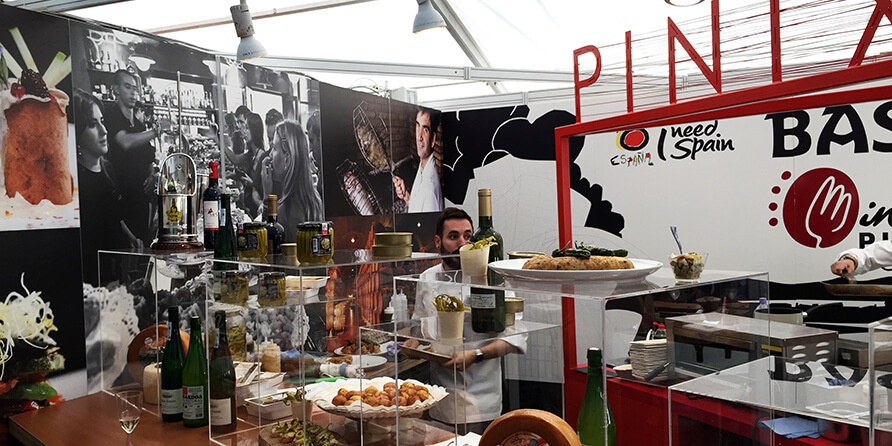
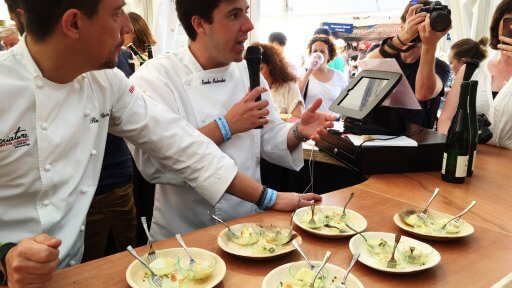
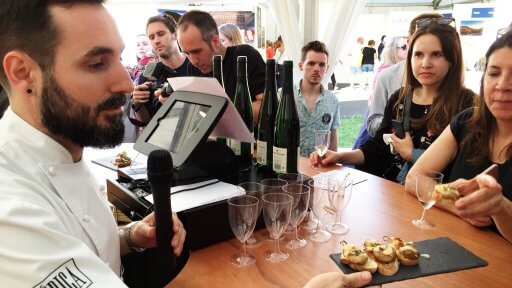
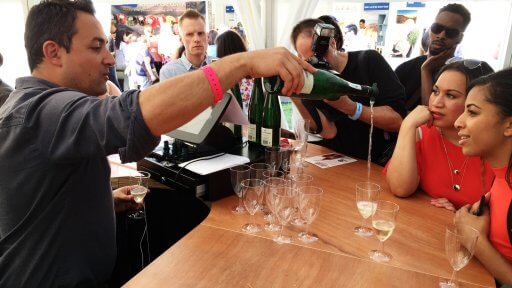
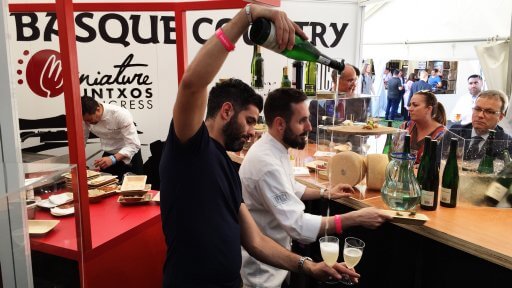
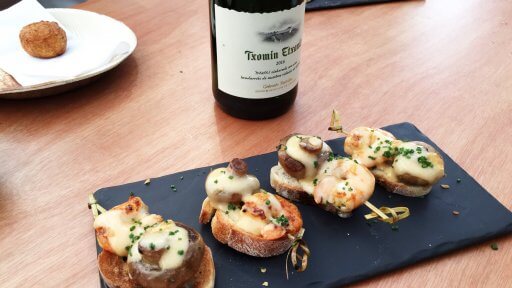

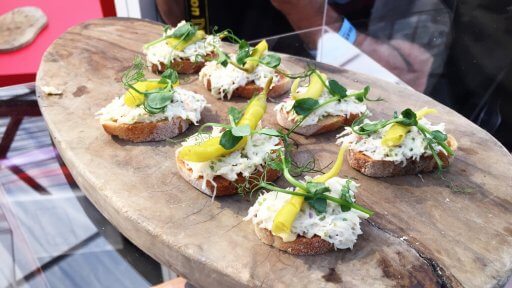
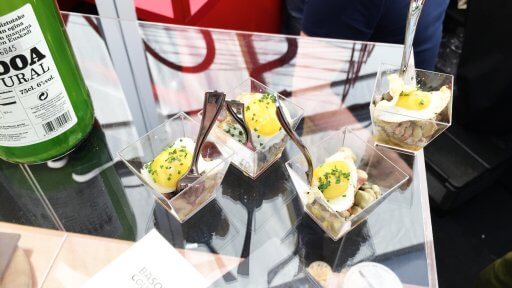
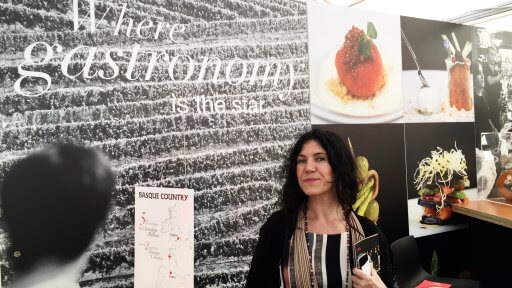

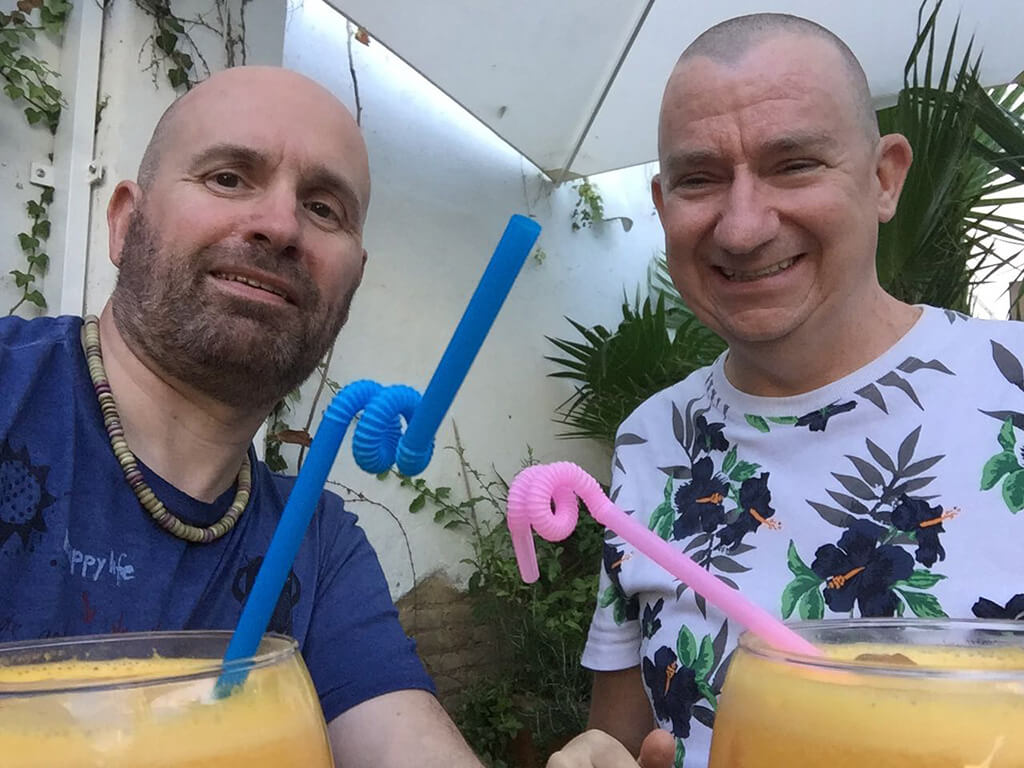

I was at the same event & just blogged about it last week!! What a funny coincidence! Wasn’t it a lovely evening in the sunshine? I really thought the ceviche cones were so pretty – and tasty!
Hi, Shikha. The sunshine definitely made the Basque Country event a more summery experience. Yes, the ceviche cones looked sooo good – more like ice creams than savoury nibbles. It was great watching the guys making them and even nicer eating them 🙂 All that fab Basque food has tempted us into wanting to explore the Basque Country.